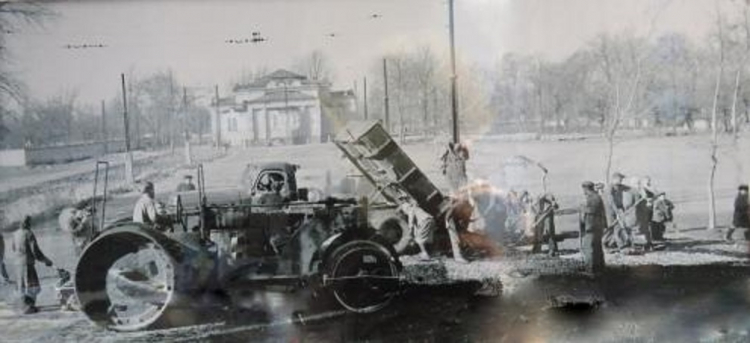REPORT OF THE CHAIRMAN OF THE UNION OF TANNERS OF THE CITY OF PISHPEK TO THE SEMIRECHENSKY REGIONAL EXECUTIVE COMMITTEE ON THE CONDITION AND OPERATION OF TANNERIES IN THE PISHPEK DISTRICT
City of Pishpek, August 9, 1920
Recently, a growing crisis in leather goods has been felt in the city of Pishpek and its district. This is explained by the complete lack of transportation of leather goods and footwear into the district from outside, while all the population was served by factories under the management of cooperatives: “Azat,” “Shavkat,” “Leather Raw Materials,” the partnership “Zemlya,” and the union of workers and artisans. The private factories of Pashkov and Gladkov have ceased operations. Among all the operating factories, the one belonging to the union of workers and artisans was the most productive, while the activities of the other factories were weak, on one hand due to insufficient funds, and on the other hand due to the lack of specialists. The leaders of this sector have reached the point where the factories will produce only one batch of leather per year, whereas under normal operations and with the energy of the masters and managers of the factories, leather production could be achieved 3 or even 4 times a year. All this is possible provided that all factories are under one management and that the individuals at the head of this matter apply all their energy, while the authorities provide the necessary funds at least initially. Currently, I, as the chairman of the union of tanners, have been approached by the Red Army with a request to supply it with the necessary goods to outfit the mobilized comrades in the army. The region is also making the same request to help outfit the front-line soldiers, wishing to give this due attention and hastening to meet the army and the entire population. On August 7, I visited all the tanneries that are operational and found the following:
1) At the factory of the cooperative “Shavkat” - 12 vats, leather in vats...*, processed...*, in the pits... | raw... *.
The factory itself is completely destroyed and requires immediate and major repairs.
2) At the factory belonging to the cooperative “Azat,” 12 vats, leather in vats 1200 pcs., processed...*, in the pits...*, raw...*, spoiled...*. The factory is also destroyed and requires major repairs.
3) At the factory belonging to the cooperative “Leather Raw Materials,” - 22 vats, finished leather...*, processed...*, in the pits...*, raw - 1,000, spoiled - 300. This factory is relatively better compared to others but requires minor repairs.
4) At the factory belonging to the union of workers and artisans, - 15 vats, leather in vats...*, processed...*, in the pits...*, raw - 5,000.
The factory also requires minor repairs. In addition to these factories, I discovered 20 factories producing smoked leather*, where there was leather in pits in raw form...*, in dry form...*, 219 finished. Having gathered the above information, I consider it my duty to provide my thoughts on the leather industry. If all 4 factories are transferred to the Union of Tanners, it will have 61 vats, with each vat capable of holding up to 150 large hides at once, totaling up to 9,250 hides at one time. With successful operations and the availability of all necessary materials, which are currently sufficient across all factories, it is possible to produce 4 batches of leather, otherwise about 37,000 pcs. If we add the vats from the factories of the partnership “Zemlya,” Gladkov, and Pashkov, which likely have up to 70,000 hides, all this, of course, is under the condition that the factories operate all year round. For this, it is necessary to make adaptations to the factories so that work can continue in cold weather and to attract all specialists in the leather industry to work. Based on the above considerations and to increase the productivity of the leather industry, I appeal to the executive committee... to make a decision to transfer all tanneries in the Pishpek district, without exception, into the full disposal of the union of the leather industry, along with all materials and hides, to have one owner, and to mobilize all specialists for work, as well as to allocate the necessary amount of money for urgent repairs of the factories and their adaptation for winter work. If this issue is resolved in favor of the Union of Tanners, we, the specialists in the leather industry, take the liberty to apply all efforts for successful operations and the immediate opening of boot-making workshops, for which there are specialists in sufficient quantity.
If the factory is not repaired, it can be confidently said that leather production will be significantly reduced.
Chairman of the [Union of] Tanners [signature]
Central State Archive of the Kyrgyz Republic. Fund 89. Inventory 1. Case 97. Pages 630-631. Original.
Resolution of the Pishpek Sanitary Commission. Document No. 48 (July 1920)












































